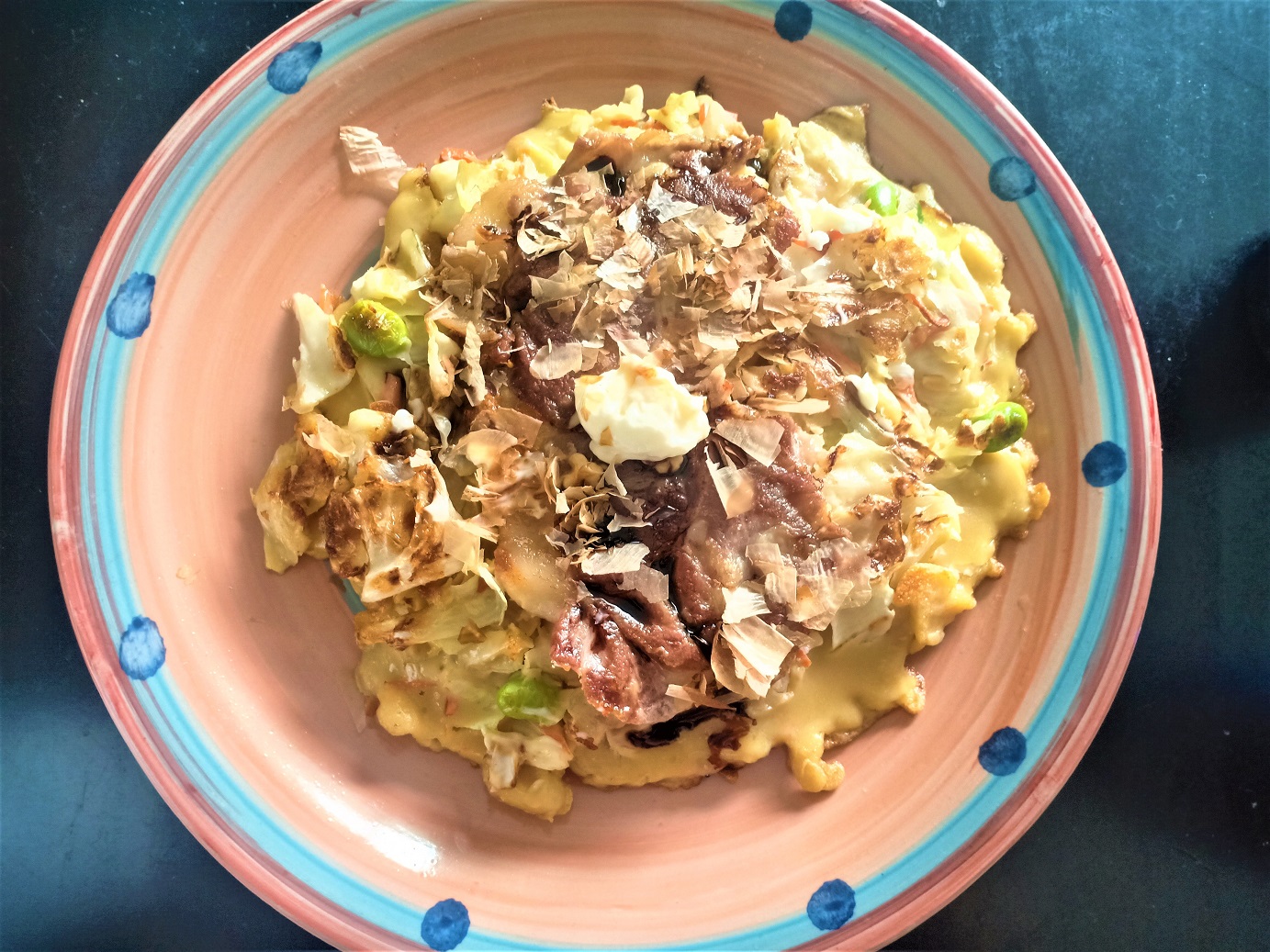
Being in Malaysia, we are blessed with an abundance of affordable and amazing street food of huge varieties. One of them being Nasi Lemak. Touted as the national dish of Malaysia, it comprises fluffy aromatic coconut rice, sweet, savoury and spicy anchovy spice paste (sambal), crunchy and salty fried anchovies, fried peanuts and topped with whichever toppings, condiments or curries as one likes. It is no wonder this dish is well-loved by people from all walks of life.
Being away from Malaysia, one starts to appreciate and cherish the convenience of having easy access to all these street foods at very affordable prices, without having to toll at the kitchen. Having not eaten Nasi Lemak for more than a year, I thought of experimenting and making the dish myself from scratch. After attempting to make it twice, I think I kind of nailed it. The soul of the dish is the sambal – slightly sweet, tangy, savoury and not too spicy, it is bursting with the umami that comes from the belacan – fermented shrimp paste.
After much researching and tweaking, here I am going to share with you my recipe of Nasi Lemak.
Serving portion: yields 4-5 persons
Sambal Nasi Lemak
- 30 dried chillies (de-seeded and then soaked in hot water until soften, to go into food processor)
- 1 big yellow onion (cut into thin slices – set aside)
- 5-6 shallots (cut into chunks – to go into food processor)
- 3 cloves garlic (cut into chunks – to go into food processor)
- 1 inch ginger (to go into food processor)
- 2.5 teaspoons of fermented shrimp paste (best to use Malaysian belacan (in solid form), I used Thai fermented shrimp paste as substitute – works as well)
- 200g dried, salted anchovies
- 2.5 – 3 tablespoons sugar (according to taste)
- 3 teaspoons salt (according to taste)
- water from 2 pulps of tamarind (best to use boiling hot water)
The rice
- 4 cups of rice
- 1 box of coconut milk (250-300ml)
- 3 inches of ginger
- 3-4 pandan leaves (screwpine leaves) – tied in knots
Methods:
- Cooking the sambal would take approximately 3-4 hours, so we will make the sambal first. First, pour about 200ml of cooking oil in a pan or wok, make sure the oil is boiling hot before adding the anchovies. Fry anchovies at medium heat until golden brown and crispy, set aside.
- Cut up the shallots, garlic, ginger and onion as described in the list above. Add the soaked dried chillies, shallots, garlic, ginger and fermented shrimp paste into the food processor. Grind the ingredients according to how you would like the texture of the paste to be – coarse or fine.
- Heat up the same cooking oil in step 1, add in the thinly sliced onions, fry until fragrant.
- Then, add in the blended spice paste from the food processor into the wok. Turn the heat down to low-medium heat and cook the sambal for another 30 minutes (or until you see the oil separates and froth is floating on the surface). Stir occasionally to avoid the sambal from sticking to the bottom of the wok.
- Add in sugar. This step helps to give the sambal a nice glaze and deeper color.
- Add in the tamarind water and salt. You may add more water if you prefer the sambal to be more liquid. Cook until the desired taste and texture are achieved. Ideally, the sambal should have a dark brownish red colour.
- You may start cooking the rice while the sambal is cooking. To retain the aroma of the coconut milk, I chose to add 2 cups of water and 4 cups of rice in the beginning. After the rice is half cooked, I then added the coconut milk and another half a cup of water and gave it a quick stir. Alternatively, one could also add in the coconut milk into the rice right from the start.
To assemble the dish, place the rice in the middle of a plate, then add peanuts, cucumber, hard-boiled (or fried) egg, sambal around and next to the rice (see picture). Bon apetit!


































